The content of the article
From 5-6 months, the baby is given applesauce halfway in a half spoon. This fruit grows in our latitudes and is familiar at the genetic level. Any new look should be given with minimal doses. Do not strive to introduce the child to the whole world at once, he gets used to the taste sensations gradually, often perceiving a new shade with concern. Feijoa should be introduced into the children's diet with caution due to the large amount of iodine in its composition.
Description and useful properties of the subtropical guest
Feijoa appeared in Europe in the 19th century. He was found in Brazil by the Portuguese naturalist Joan da Silva Feijo. First, the plant cuttings were brought to France, from there it spread through the warm climatic zones of other countries. In Russia, the first attempts at acclimatization took place in Yalta and on the Black Sea coast of the Caucasus.
Depending on the variety, the plant looks like a powerful sprawling shrub or tree up to 4-4.5 meters high with a thick branched crown. Flowering begins in May-June. In the homeland of the plant, in the subtropics, it goes in waves or continuously. The flowers are very beautiful, with a white border around the edge of the petals, closer to the cup turning into a more saturated color. Numerous stamens create a fluffy islet in the middle. Unfortunately, most flowers will fall off like empty flowers. Only 15-17% percent will be able to form the ovaries, and small fragrant fruits with a dark green skin will grow from them.
They appear on sale closer to winter, immediately attracting the attention of those who know about their unique properties. The main value lies in the high content of iodine. By this indicator, the berries leave far behind seafood. 7-10 fruits per day are enough to cover the body's needs for this substance. Children under 5 years old are recommended to give no more than 1 berry per day.
In addition to iodine, the composition includes:
- tannins;
- vitamins C, H, E, B, PP;
- silicon;
- magnesium;
- phosphorus;
- calcium;
- sodium;
- boron;
- iron;
- manganese;
- rubidium;
- fluorine;
- zirconium;
- digestible carbohydrates;
- antioxidants;
- interchangeable and essential amino acids.
In 100 gr. The product contains 61 kcal.
Interesting: in plants grown in the coastal zone, the iodine content is much higher than in those that grow in continental areas.
Feijoa has a peculiar taste, reminiscent of both strawberries and pineapple with a slight acidity and rich aroma. This applies only to well-ripened fruits. Unripe will be acidic and astringent.
A few berries a day will lower the temperature, relieve joint pain and discomfort in overworked muscles, remove most of the pathogenic bacteria from the digestive tract, and lower blood pressure. Fruits are recommended for anemia, vitamin deficiency, iron and iodine deficiency. This is especially important for children who are stunted in growth and development, to maintain the immunity of babies during seasonal influenza epidemics, during adaptation in kindergarten or primary school. Acquaintance with an exotic fruit by nutritionists recommend starting at the age of one year and up to 3 years of age not giving more than 1 fetus per day.
Important: children can eat only fully ripened fruits, green cause a violation of the digestive tract.
Feijoa treats for children
Not all babies like a specific slightly astringent taste. Berries are best peeled off. It contains a number of useful substances, but there are hardly any children there, except for lovers of unusual tastes. Starting from 3 years, the amount of product is gradually increasing. It can be eaten raw or cook one of the goodies.If you do not apply heat treatment or reduce its time to a minimum, then all useful substances will remain unchanged.
Please note: the maximum daily dose of iodine for adults is 2 grams, which corresponds to 300 grams. fresh feijoa fruits.
For children, the norms are recounted in accordance with age and are guided by them, treating the child with an overseas treat. An overdose of the substance also does not benefit the body, causing allergies and degradation of the thyroid gland, so everything is good in moderation.
Feijoa ripeness can be determined by breaking the fruit. The pulp should be translucent with a bright aroma. If it is white, then the berry is picked ahead of time. A brownish hue indicates that the fetus has matured and the fermentation process will begin soon. Such a copy is not given to children either.
Recipes
The advantage remains for the undigested forms.
- The fruits are passed through a meat grinder with a fine mesh, mixed with an equal amount of sugar. The mixture is laid out in small sterilized jars and stored in the refrigerator.
- Vitamin mix is prepared from 1 kg. berries, three lemons without peels and pits, a third of a kilogram of peeled walnuts. The ingredients are crushed, the mixture is seasoned with 500 g. honey, thoroughly mixed. It is given to the child, instead of vitamins, 1 teaspoon 3 times a day. Dose varies by age.
- Fruit salad opens up scope for imagination. Feijoa goes well with most fruits. To fill such a dish is better with natural yogurt, you can decorate with whipped cream.
You can cook and jam, the usual proportions, 1 kg each. berries and sugar. In the process of cooking, most of the substances will go into other forms and the value of feijoa for the body will decrease. A delicious berry for children is very useful, but not earlier than a year and in small quantities.
Video: feijoa - benefits, recipes, how to eat feijoa

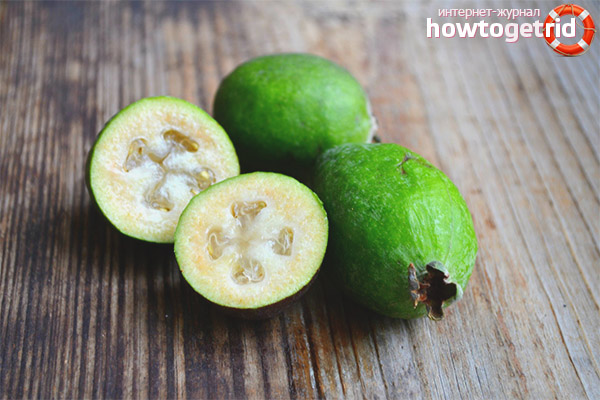
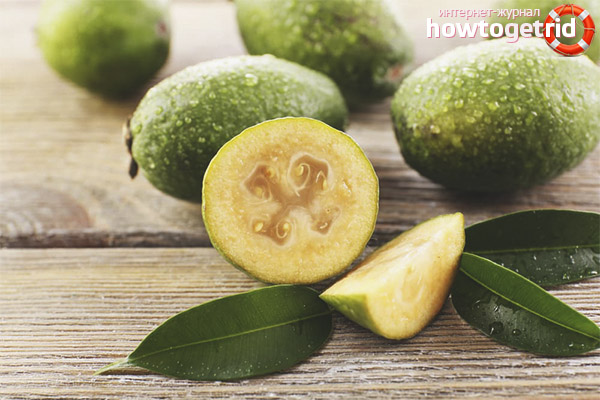


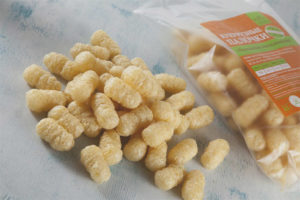
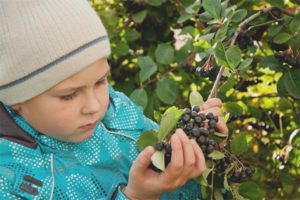
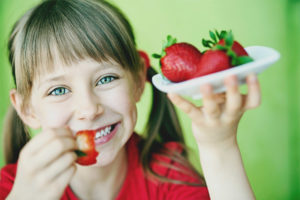


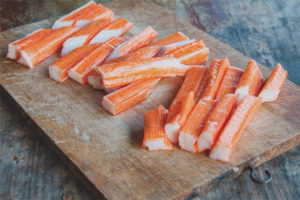
Submit